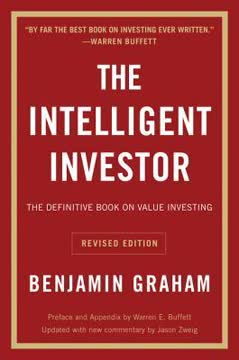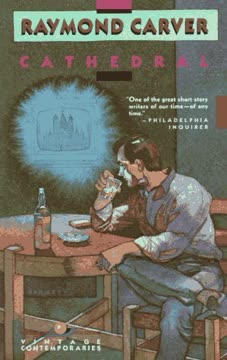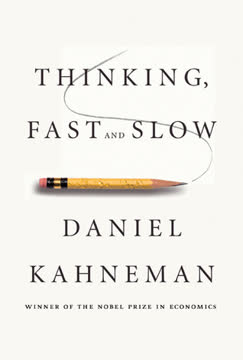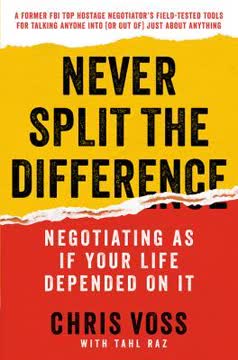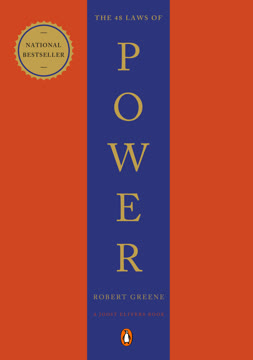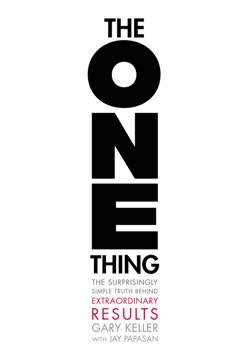نکات کلیدی
1. نقشههای ذهنی: ابزار نهایی تفکر سازمانی
نقشه ذهنی ابزار نهایی تفکر سازمانی است - چاقوی سوئیسی مغز!
نقشههای ذهنی یادداشتبرداری را متحول میکنند. آنها نمودارهای بصری هستند که از یک ایده مرکزی تابش میکنند و با استفاده از رنگها، تصاویر و کلمات کلیدی اطلاعات را سازماندهی میکنند. این روش فرآیند طبیعی تفکر مغز را منعکس میکند و درک، بهخاطر سپردن و تولید ایدههای جدید را آسانتر میسازد.
ویژگیهای کلیدی نقشههای ذهنی:
- تصویر مرکزی که موضوع اصلی را نشان میدهد
- شاخههای اصلی با تمهای کلیدی که از مرکز تابش میکنند
- زیرشاخهها با جزئیات پشتیبان
- استفاده از رنگها، نمادها و تصاویر
نقشههای ذهنی هر دو نیمکره مغز را درگیر میکنند و تفکر منطقی (نیمکره چپ) و خلاق (نیمکره راست) را ترکیب میکنند. این همافزایی حافظه، تواناییهای حل مسئله و عملکرد شناختی کلی را بهبود میبخشد.
2. پتانسیل کامل مغز خود را با نقشهبرداری ذهنی باز کنید
مغز بر دو اصل مهم کار میکند: همافزایی و تکرار.
قابلیتهای مغز خود را درک کنید. مغز انسان تقریباً یک تریلیون نورون دارد که هر کدام قویتر از یک کامپیوتر استاندارد هستند. این شبکه وسیع تعداد تقریباً بینهایتی از الگوهای فکری و اتصالات بالقوه ایجاد میکند.
اصول کلیدی مغز:
- همافزایی: کل بزرگتر از مجموع اجزای آن است
- تکرار: هرچه بیشتر از مغز خود استفاده کنید، قویتر میشود
نقشههای ذهنی با تشویق به تفکر تداعیگر و تعامل مکرر با اطلاعات، از این اصول بهره میبرند. با ایجاد اتصالات بصری بین ایدهها، نقشههای ذهنی توانایی طبیعی مغز برای ایجاد مسیرهای عصبی جدید را تحریک میکنند و یادگیری و خلاقیت را افزایش میدهند.
3. قدرت تداعی و تخیل در یادگیری
یک تصویر به اندازه هزار کلمه ارزش دارد و به شما کمک میکند از تخیل خود استفاده کنید.
حافظه بصری را مهار کنید. مغز ظرفیت فوقالعادهای برای شناخت و یادآوری بصری دارد. با گنجاندن تصاویر، رنگها و روابط فضایی در یادداشتبرداری خود، میتوانید توانایی خود را در بهخاطر سپردن و درک اطلاعات بهطور چشمگیری بهبود بخشید.
تکنیکهایی برای بهبود یادگیری:
- استفاده از تصاویر و نمادهای زنده
- استفاده از کدگذاری رنگی
- ایجاد تداعیهای بهیادماندنی بین ایدهها
- درگیر کردن حواس متعدد در فرآیند یادگیری
نقشههای ذهنی بهطور طبیعی این تکنیکها را در بر میگیرند و آنها را به ابزاری ایدهآل برای مطالعه، طوفان فکری و حل مسئله تبدیل میکنند. با تبدیل مفاهیم انتزاعی به نمایشهای بصری ملموس، نقشههای ذهنی اطلاعات را قابل دسترستر و بهیادماندنیتر میسازند.
4. TEFCAS: فرمول نهایی موفقیت
آزمایش، رویداد، بازخورد، بررسی، تنظیم، موفقیت
ذهنیت رشد را بپذیرید. TEFCAS یک چارچوب قدرتمند برای یادگیری و دستیابی به موفقیت است. این چارچوب بر اهمیت دیدن شکستها بهعنوان فرصتهای یادگیری و تنظیم مداوم رویکرد خود بر اساس بازخورد تأکید میکند.
فرآیند TEFCAS:
- آزمایش: تلاش برای چیزی جدید
- رویداد: مشاهده آنچه اتفاق میافتد
- بازخورد: جمعآوری اطلاعات درباره نتیجه
- بررسی: تحلیل بازخورد
- تنظیم: ایجاد تغییرات لازم
- موفقیت: دستیابی به هدف یا یادگیری برای تلاش بعدی
این فرآیند تکراری با مکانیسمهای طبیعی یادگیری مغز همسو است و میتواند در هر زمینهای از زندگی، از توسعه شخصی تا اهداف حرفهای، اعمال شود. نقشههای ذهنی میتوانند برای پیگیری پیشرفت و تجسم سفر TEFCAS استفاده شوند و به حفظ تمرکز و انگیزه کمک کنند.
5. افزایش خلاقیت از طریق تکنیکهای نقشهبرداری ذهنی
اگر واقعاً میخواهید جهشهای بزرگی به جلو داشته باشید و قدرتهای حافظه خود را افزایش دهید، باید بهطور فعال از تخیل و تداعی استفاده کنید وقتی میخواهید چیزی را بهخاطر بسپارید.
تفکر خلاق را پرورش دهید. نقشههای ذهنی فقط ابزارهای سازمانی نیستند؛ آنها کاتالیزورهای قدرتمندی برای تفکر خلاق هستند. با تشویق به تفکر غیرخطی و تداعیهای بصری، نقشههای ذهنی به باز کردن پتانسیل خلاق مغز شما کمک میکنند.
تکنیکهای خلاقانه نقشهبرداری ذهنی:
- استفاده آزادانه از رنگها و تصاویر
- ایجاد اتصالات غیرمنتظره بین ایدهها
- گنجاندن طنز و اغراق
- درگیر کردن تمام حواس خود در فرآیند
- اجازه دادن به تداعی آزاد و ایدههای "وحشی"
تمرین منظم با این تکنیکها میتواند به افزایش روانی در تولید ایده، انعطافپذیری بیشتر در حل مسئله و اصالت بیشتر در تفکر شما منجر شود. با مهارت بیشتر در نقشهبرداری ذهنی، خواهید دید که تواناییهای خلاقانه شما فراتر از صفحه و به تمام جنبههای زندگی شما گسترش مییابد.
6. تناسب اندام جسمی عملکرد ذهنی را بهبود میبخشد
رابطهای قطعی بین تناسب اندام جسمی و هوشیاری ذهنی و ثبات عاطفی یافت شده است.
بدن و ذهن را با هم پرورش دهید. تناسب اندام جسمی نقش مهمی در بهینهسازی عملکرد ذهنی ایفا میکند. ورزش منظم، تغذیه مناسب و استراحت کافی همگی به عملکرد شناختی بهتر، افزایش خلاقیت و بهبود سلامت عاطفی کمک میکنند.
جنبههای کلیدی تناسب اندام جسمی برای قدرت ذهنی:
- ورزش هوازی برای افزایش جریان اکسیژن به مغز
- تمرینات قدرتی برای تعادل کلی بدن و ذهن
- تمرینات انعطافپذیری برای کاهش استرس و تنش
- تغذیه مناسب برای سوخترسانی به عملکرد مغز
- خواب کافی برای تثبیت حافظه و خلاقیت
گنجاندن نقشههای ذهنی در برنامه تناسب اندام شما میتواند به برنامهریزی تمرینات، پیگیری پیشرفت و تجسم اهداف کمک کند. این همافزایی بین تمرینات جسمی و ذهنی میتواند به بهبودهای قابل توجهی در سلامت کلی و عملکرد شناختی منجر شود.
7. استفاده از نقشههای ذهنی در زندگی روزمره برای موفقیت بیشتر
نقشههای ذهنی فقط ابزارهای کاری نیستند - آنها میتوانند به شما در برنامهریزی و سازماندهی زندگی اجتماعی و شخصیتان نیز کمک کنند، چه برسد به اینکه خلاقیت شما را به ارتفاعات شگفتانگیزی برسانند.
نقشههای ذهنی را در زندگی روزمره ادغام کنید. تطبیقپذیری نقشههای ذهنی آنها را به ابزارهای ارزشمندی برای طیف گستردهای از کاربردهای شخصی و حرفهای تبدیل میکند. با گنجاندن نقشهبرداری ذهنی در جنبههای مختلف زندگی خود، میتوانید بهرهوری، خلاقیت و موفقیت کلی خود را افزایش دهید.
کاربردهای روزمره نقشههای ذهنی:
- کار: برنامهریزی پروژهها، یادداشتبرداری از جلسات، آمادهسازی ارائهها
- آموزش: مطالعه برای امتحانات، نوشتن مقالات، سازماندهی تحقیقات
- زندگی شخصی: تعیین اهداف، برنامهریزی رویدادها، طوفان فکری ایدهها
- حل مسئله: تحلیل موقعیتهای پیچیده، تولید راهحلها
- خلاقیت: توسعه مفاهیم جدید، کاوش ایدههای هنری
با استفاده مداوم از نقشههای ذهنی در زمینههای مختلف زندگی خود، فرآیند تفکر یکپارچهتر و کارآمدتری را توسعه خواهید داد. این رویکرد جامع به مدیریت اطلاعات و تولید ایده میتواند به بینشهای بیشتر، تصمیمگیری بهتر و موفقیت بیشتر در تمام تلاشهای شما منجر شود.
آخرین بهروزرسانی::
FAQ
What's "The Ultimate Book of Mind Maps" about?
- Overview: "The Ultimate Book of Mind Maps" by Tony Buzan is a comprehensive guide to using Mind Maps as a tool for enhancing creativity, memory, and overall life success.
- Purpose: The book aims to teach readers how to unlock their brain's potential by using Mind Maps to organize thoughts, solve problems, and plan effectively.
- Structure: It covers the basics of Mind Mapping, the science behind it, and practical applications in various aspects of life, including work, education, and personal development.
- Author's Expertise: Tony Buzan, a renowned expert in the field of mental literacy, shares insights and techniques developed over decades of research and practice.
Why should I read "The Ultimate Book of Mind Maps"?
- Unlock Creativity: The book provides tools to enhance your creative thinking, allowing you to generate innovative ideas and solutions.
- Improve Memory: It offers strategies to boost memory retention and recall, making learning more efficient and effective.
- Life Transformation: By applying Mind Maps, you can improve time management, goal setting, and personal organization, leading to a more successful and fulfilling life.
- Expert Guidance: With Tony Buzan's expertise, you gain access to proven methods that have helped millions worldwide.
What are the key takeaways of "The Ultimate Book of Mind Maps"?
- Mind Mapping Basics: Learn the fundamental principles and steps to create effective Mind Maps.
- Brain Synergy: Understand how Mind Maps align with the brain's natural way of thinking, enhancing learning and creativity.
- Practical Applications: Discover how to use Mind Maps in everyday situations, from planning meetings to personal goal setting.
- Success Formula: The book introduces the TEFCAS model, a framework for achieving success through trial, feedback, and adjustment.
How do Mind Maps work according to Tony Buzan?
- Whole-Brain Thinking: Mind Maps engage both the left and right hemispheres of the brain, promoting holistic thinking.
- Visual Structure: They use images, colors, and curved lines to represent ideas, making information more memorable and engaging.
- Associative Thinking: Mind Maps encourage the brain to make connections between ideas, facilitating deeper understanding and creativity.
- Flexible and Dynamic: Unlike linear notes, Mind Maps allow for the free flow of ideas, adapting to the brain's natural thought processes.
What are the seven steps to making a Mind Map?
- Start in the Center: Begin with a central image or word that represents the main idea.
- Use Images and Colors: Incorporate visuals and colors to stimulate the brain and enhance memory.
- Connect Branches: Link main branches to the central image and sub-branches to main branches, reflecting the brain's associative nature.
- Use Curved Lines: Draw branches as curved lines to keep the Mind Map visually engaging and dynamic.
- One Word per Line: Use single keywords to maximize flexibility and trigger associations.
- Use Images Throughout: Add images to branches to reinforce ideas and aid recall.
- Keep it Simple: Maintain a clear and organized structure to ensure the Mind Map is easy to understand and use.
How can Mind Maps help in everyday success?
- Work Efficiency: Use Mind Maps to plan meetings, organize projects, and enhance productivity at work.
- Personal Development: Apply Mind Maps for goal setting, problem-solving, and personal growth.
- Social Life: Plan events, manage social commitments, and improve communication with Mind Maps.
- Life Planning: Create Mind Maps to visualize and achieve long-term life goals and aspirations.
What is the TEFCAS model in "The Ultimate Book of Mind Maps"?
- Trial: Begin with an attempt or experiment in any learning or problem-solving situation.
- Event: Observe the outcome of the trial, whether successful or not.
- Feedback: Gather information and insights from the event to understand what worked and what didn't.
- Check: Analyze the feedback against your goals to identify areas for improvement.
- Adjust: Make necessary changes to your approach based on the feedback and analysis.
- Success: Use the refined approach to achieve your desired outcome, repeating the cycle as needed.
How does Tony Buzan suggest using Mind Maps for creative thinking?
- Brainstorming Tool: Use Mind Maps to generate and organize ideas during brainstorming sessions.
- Association and Imagination: Encourage the brain to make connections and use imagination to explore new possibilities.
- Visual Stimulation: Incorporate colors and images to engage the brain's creative centers and enhance idea generation.
- Flexibility: Allow for the free flow of ideas, adapting the Mind Map as new thoughts and connections emerge.
What are some practical examples of Mind Maps in action?
- Meeting Planning: Use Mind Maps to organize agendas, track tasks, and ensure all aspects of a meeting are covered.
- Essay Writing: Plan and structure essays with Mind Maps to ensure coherent arguments and comprehensive coverage of topics.
- Language Learning: Create Mind Maps to memorize vocabulary and practice language skills through visual associations.
- Event Planning: Organize events, such as weddings or parties, with Mind Maps to manage details and ensure success.
What are the best quotes from "The Ultimate Book of Mind Maps" and what do they mean?
- "A Mind Map is the ultimate organizational thinking tool – the Swiss army knife of the brain!" This quote highlights the versatility and effectiveness of Mind Maps in organizing thoughts and ideas.
- "Imagination is more important than knowledge, for imagination is limitless." Emphasizing the power of creativity, this quote encourages readers to value and cultivate their imaginative abilities.
- "You are the engineer and architect of your own physical brain, and the universes of thought that reside within it." This quote inspires readers to take control of their mental development and harness the power of their brains.
- "If you never give up, you are a winner." A reminder of the importance of persistence and resilience in achieving success.
How can Mind Maps improve memory and learning?
- Visual Memory: Mind Maps use images and colors, which are more easily remembered than plain text.
- Associative Learning: They encourage the brain to make connections between ideas, enhancing understanding and recall.
- Repetition and Review: Mind Maps facilitate regular review of information, reinforcing memory retention.
- Engagement: By making learning more interactive and engaging, Mind Maps help maintain focus and interest.
What are some advanced techniques for using Mind Maps?
- Paradigm Shifts: Use Mind Maps to identify and explore new frameworks or perspectives on a topic.
- Creative Problem Solving: Apply Mind Maps to brainstorm solutions and visualize complex problems.
- Life Vision Mapping: Create Mind Maps to outline and achieve long-term personal and professional goals.
- Collaborative Mind Mapping: Use Mind Maps in group settings to enhance teamwork and collective idea generation.
نقد و بررسی
کتاب کتاب نهایی نقشههای ذهنی نظرات متفاوتی را به خود جلب کرده است. بسیاری از خوانندگان به خاطر مفهوم و کارایی آن در سازماندهی افکار، بهبود حافظه و افزایش بهرهوری از آن تمجید میکنند. توضیحات روشن و مثالهای متنوع نیز مورد توجه قرار گرفته است. با این حال، برخی از منتقدان به تکراری بودن، تبلیغاتی بودن بیش از حد و کمبود عمق در برخی زمینهها اشاره کردهاند. در حالی که مبتدیان این کتاب را مفید میدانند، کاربران پیشرفته ممکن است به دنبال استراتژیهای دقیقتری باشند. تکنیک نقشهبرداری ذهنی بهطور گستردهای به عنوان یک ابزار ارزشمند شناخته میشود، اما نظرات در مورد نحوه اجرای کتاب متفاوت است.
Similar Books

